|
108. Melitaea aurelia (Nickerl, 1850) / Nickerl’s fritillary / Nymphalidae – Melitaeinae
NL: steppemelitea, steppeparelmoervlinder / D : Ehrenpreis-Scheckefalter, Grasheiden-Scheckenfalter / F: mélitée des digitalis, damier aurélie
 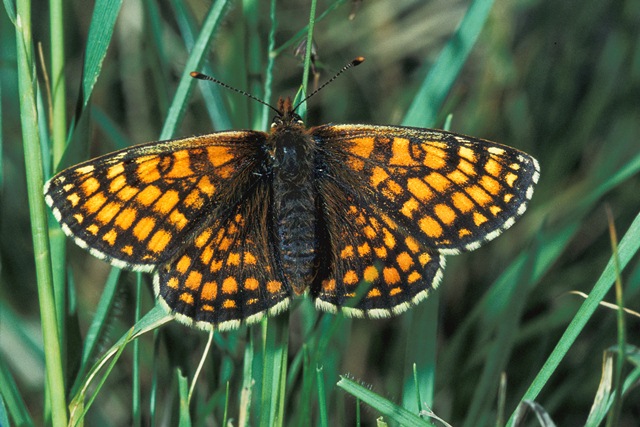 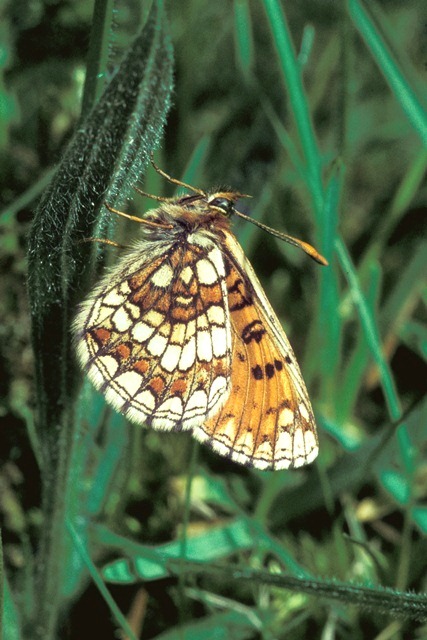
Photographs: Frits Bink ©.
Small, wing length 17 (16-19) mm. In the Benelux known from a few chalk grasslands in Luxemburg and Wallonia, in the Netherlands present from 1993 until 1996, probably as a result of an introduction (Bos et al. 2006: 290).
Butterfly is on the wing from late-May until mid-July and peaks mid-June. The species is known from sub-continental to mild continental climates, amplitude 8 to 14. Required heat sum 700°d, maximum tolerated 1800°d, correlated climate windows 22 and 35 weeks.
The species is very similar to Melitaea athalia, a woodland species, whereas Melitaea aurelia is a species of warm and dry environments and is, in the Benelux, only known from chalk grassland. This distinction makes it easier to separate the two species.
Ecological characteristics
Behaviour over time
Overwintering: small larva of 5 mm in size, in small nest in the litter layer.
Reproduction: oviposition starts after about 10 days when the body contains 198 (142-254) eggs, estimated potential production 1.3 times as much.
Larval feeding periods: in summer about 30 days in the period from end-July until early-September, after diapause in spring 60 (52-75) days from early-April until end-June.
Generations: one.
Spreading of risk: not observed.
Life cycle: egg about 18 days; larvae 46 weeks; pupa 18 (16-21) days.
Life span of adult: rather long, 3 weeks.
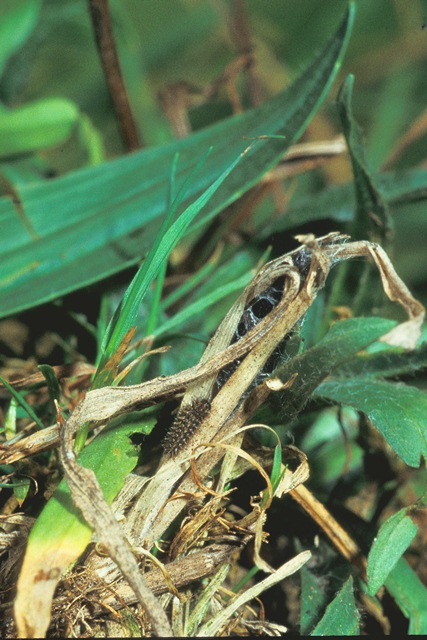 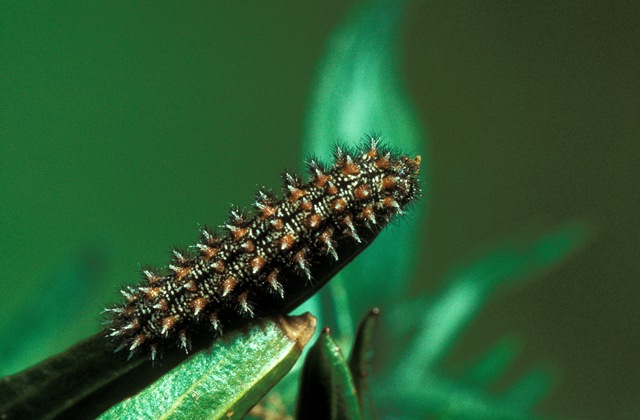
Photographs: Frits Bink ©.
Behaviour in space
From stay-at-home to migrant: stay-at-home, spatial requirement modest.
Finding a mate: male patrols.
Orientation in the landscape: open landscape with medium tall vegetation.
Oviposition: one batch of about 150, sometime followed by a second smaller one of about 50, on the underside of a leaf of the host.
Defence
Threats from other organisms: larvae are armoured with bristles.
Threats from the environment: larvae and adults are resistant to heat and drought.
Feeding habits
Adult: nectar, al kind of flowers in the herb vegetation, such as knapweed (Centaurea spp).
Larva: in summer in a community nest and feeds on old leaf, in spring when it lives more solitarily on young shoots.
Larval foodplants
Plant species: Plantaginaceae, Plantago laceolata, P. media, Orobanchaceae, Melampyrum arvense, Rhinanthus minor.
Journal
Rearing experiment based on specimen from Velosnes, France: provided by Nico Elfferich.
5 September 1983: larvae which are near to diapause received.
13 September: larvae had constructed one nest between wilted leaves in the litter layer.
Overwintered outdoors.
5 February 1984: taken indoors, a few larvae had become active.
14 February: larvae started to eat singly and basked.
15 March: larvae also nocturnal, ate in the top of the leaves.
20 March: two larvae fourth instar.
2 April: two larvae in last instar.
19 April: larvae fully grown, basked up to 29°C, at 32°C two larvae basked and three moved into shade under the leaves.
21 April: at 40°C all larvae hid in the shade.
23 April: larvae fed at high speed.
28 April: five pupae and one larva. Pupation occurred in a loose tent like Issoria lathonia.
2 May: last larva pupated.
13 May: first adult appeared, male.
16 May: second one, female.
17 May: two males emerged.
19 May: two females emerged.
20 May: pairing observed.
23 May: last pupa hatched.
3 June: oviposition: one batch of 140 eggs and a smaller one of 25 eggs.
19 June: eggs were brown in colour, most eaten by an earwig.
Table 108-1. Results of dissections

Table 108-2. Collection and observation localities
D, Lorch, 300 m, 50° 02’ 05”N – 7° 47’ 56”E; 26 May 1986 (larvae on Rhinanthus).
F, Velosnes, 179 m, 49° 30’ 09”N – 5° 27’ 27”E; 19 August 1985, 28 June 2002.
F, Vosges, Katzenkoepfle, 565m, 48° 01’ 54”N – 7° 06’ 04”E; 14 June 1984.
F, Vosges, le Zinnkoepfle, 481 m 47° 57’ 56”N – 7° 15’ 08”E; 10 July 1984.
F, Pagny-la-Blanche-Côte, 308 m, 48° 32’ 37”N – 5° 42’ 58’E; 10 July 1985, 5 July 2006.
Fig. 108-1. Melitaea aurelia, phenogram adapted from Fichefet et al. 2008: 237.
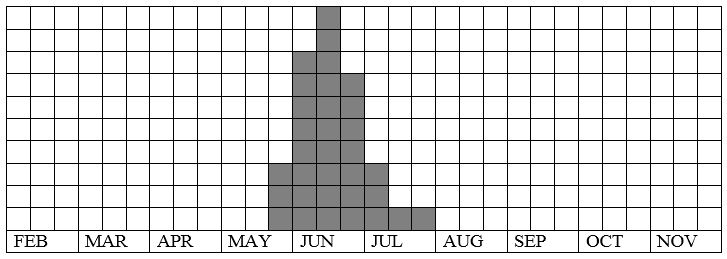
Fig. 108-2. Melitaea aurelia, habitat characteristics.

Fig. 108-3. Melitaea aurelia, climate matrix, heat-sums 700 - 1800°d.
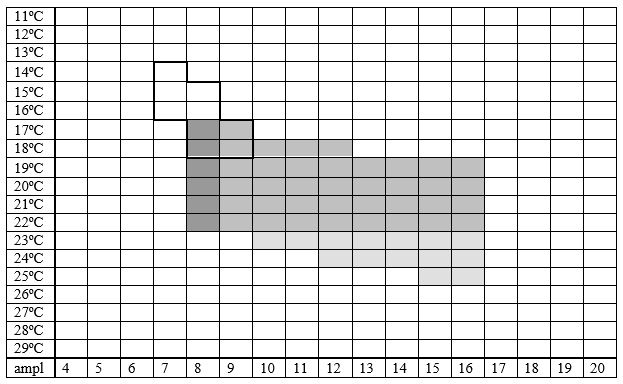
|










